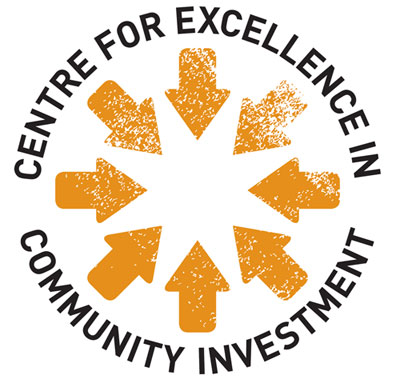Updated guidance on impact measures
As of October 2020, we are into Phase 2 of this project. The figures in this second phase are have been expanded and are designed to capture the range of ways that housing associations support their residents. The purpose of these measures is to record changes in the delivery of community investment over time, and demonstrate the collective impact that housing associations have through supporting their residents. By recording this data, we hope to build up a picture of how coronavirus is affecting the demand and delivery of community investment services over time.
We recognise that staff time continues to be stretched during the pandemic, and appreciate organisations’ ongoing participation in this project. As a result of asking for an expanded set of measures, we would like to stress that organisations are welcome to send in returns with only some figures filled in. Our preference is to receive incomplete returns from organisations who have recorded only the figures that are relevant to them. We prefer this to not receiving a return because organisations feel they must complete all figures.
Updated guidance (12 February 2020)
Last month, we asked you to treat all advice, guidance and support measures as running totals in an effort to avoid double counting. However this caused some confusion, so we would now like to clarify our approach to advice, guidance and support measures. Please follow the below going forward.
We consider advice, guidance and support to be one-to-one support that is personalised to an individual’s situation.
From the organisations we surveyed, we found that it’s more common to record this advice, guidance and support by “Number of individuals/households supported” rather than the “Number of advice sessions/appointments”.
We also found that it’s more common for organisations to count the individuals/households they support each month, rather than counting them only once at the start of the support.
As a result, we’re asking you to count the “Number of individuals/households supported” you support each month. Please do this for all advice, support and guidance measure. This will give us a impactful figure to report on and represent the sector with.
We hope this is a simple and clear way to record advice, guidance and support, and that those who record advice sessions are able to estimate the number of people supported with these sessions. There is no need to let us know whether the figure you provide each month is higher, lower, or the same as last month.
Please note:
- New way of counting zeros – On the data capture form, all measures have “N/A” in the “your figure” column. Please leave this there if this is a service you don’t provide. Please only insert “0” if this a service you provide, where there has been no activity in the past month.
General advice about how to complete your Phase 2 Impact Measures form
Our impact measures are due on the 15th of every month, to cover the previous month. For example, figures sent to us by 15 January 2021 should cover the period 1 – 31 December 2020.
Before you fill in your figures, please read the information on the Cover Sheet tab and fill in the information on the Your information tab.
Following feedback from respondents, the preference was to keep recording and reporting figures monthly. However, we recognise that some of the figures may be easier to capture quarterly, for a variety of reasons. If you can’t record any of the figures monthly, that’s fine. Please do make a note on your data capture form and send them in quarterly when you have them.
For any of the measures, you’re welcome to record figures in situations where you have commissioned services from another organisation and are referring residents to support through that service e.g. if you have commissioned another organisation to support your residents’ mental wellbeing, you can record the number of residents supported through that service.
On the data capture form, all measures have “N/A” in the “your figure” column. Please leave this there if this is a service you don’t provide. Please only insert “0” if this a service you provide, where there has been no activity in the past month.
For more information please email Adam Chester.
The measures

Total number of residents identified in arrears: please tell us the total number of residents in arrears, and also indicate to us whether this is higher, lower, or the same as last month. This figure is a running total which may fluctuate up or down over the months, or remain the same. It’s therefore important to capture both increases and decreases.

Total number of residents identified on Universal Credit : please tell us the total number of residents on Universal Credit, and also indicate to us whether this is higher, lower, or the same as last month. This figure is a running total which may fluctuate up or down over the months, or remain the same. It’s therefore important to capture both increases and decreases.

Number of welfare calls to residents in the past month: we are defining “welfare calls” as any call made to residents about their welfare. They are more likely to be check-in calls to residents to see whether they need any additional support, rather than in-depth advice or guidance, which are covered in other measures. The measure includes calls made to those in sheltered schemes or as part of ongoing befriending services.
Please only provide the figures for the month which has just passed, rather than providing a total figure from all months so far. Each month, we will publish the number of welfare calls which happened in that month, as well as the total number of welfare calls so far.

Overall number of people supported with advice, guidance, and support in the past month: we are capturing multiple measures about different types of advice, guidance and support, to reflect that housing associations provide a wide range of valuable advice to residents, on a variety of topics.
We consider “advice, guidance and support” to be one-to-one or personalised guidance, or guidance targeted directly at a group of residents. It can include referrals of residents to commissioned advice services, not just those delivered directly by your staff. It doesn’t refer to posts on social media, or resident newsletters distributed to all residents.
We are capturing one overall figure, which is “Overall number of people supported with advice, guidance, and support in the past month.” we are also capturing specific figures for different themes. Please see the data capture form (which you can download at the bottom of this page), for examples within each theme. The different themes we are capturing are:
- Money and debt
- Welfare and benefits advice
- Digital
- Employment, education, and training
- Mental wellbeing (including loneliness)
For ALL advice, guidance and support measures, please tell us the total number of residents supported in the past month, and also indicate to us whether this is higher, lower, or the same as last month. Some residents/young people may be supported for longer than one month, therefore these figures are running totals and it is important to capture fluctuations up or down over the months. This will prevent double counting.

Number of food interventions made in the past month: we are defining “food interventions” as a catch all terms to capture any support given to residents about food, including delivering food parcels your staff have prepared, and making referrals to food banks. Some households will receive support with food more than once in a month, so we are recording each occasion as a separate food intervention.
Please only provide the figures for the month which has just passed, rather than providing a total figure from all months so far. Each month, we will publish the number of food interventions which happened in that month, as well as the total number of food interventions so far.

Number of young people supported over the past month: this figure is about supporting young people up to the age of 18 in any way, including with activities, employment and training, or mental wellbeing.
Please only provide the figures for the month which has just passed, rather than providing a total figure from all months so far. Each month, we will publish the number of young people supported which happened in that month, as well as the total number of young people supported so far.
 Amount distributed through direct financial support in the past month: this figure is about direct financial support to residents, through hardship funds, rent relief funds, fuel vouchers, or other means. This can be about support distributed from the budget of your organisation, or from funds that you have raised for distribution. You are also able to record the financial value of goods and services which you have purchased and then distributed directly to residents e.g. white goods, digital tablets.
Amount distributed through direct financial support in the past month: this figure is about direct financial support to residents, through hardship funds, rent relief funds, fuel vouchers, or other means. This can be about support distributed from the budget of your organisation, or from funds that you have raised for distribution. You are also able to record the financial value of goods and services which you have purchased and then distributed directly to residents e.g. white goods, digital tablets.
This figure is not about a money claimed in benefits from government, and the numbers of residents supported in this way is recorded in another figure. This figure is also not about funds distributed to organisations, which are captured in a different measure.
Number of community and voluntary groups supported financially over the past month: this figure is about showing how connected housing associations are to community and voluntary groups, and local charities, in the areas that they work. Initially, we are capturing financial support only, although we recognise that the support provided often goes beyond this. In order to be counted, organisations or groups should ideally have a charity commission number and/or a constitution. If there are other groups outside this criteria who you have an ongoing relationship and support financially, who you would like to count, please do record them.
This figure is NOT about funds distributed directly to residents, which are captured in a different measure.
Amount distributed to community and voluntary groups over the past month: this figure is about showing how much financial support is given to community and voluntary groups, and local charities. In order to be counted, organisations or groups should ideally have a charity commission number and/or a constitution. If there are other groups outside this criteria who you have an ongoing relationship and support financially who you would like to count, please do record them.
This figure is not about funds distributed directly to residents, which are captured in a different measure.

Number of residents supported into employment and training: respondents to the impact measures have expressed interest in recording social value figures around employment, education, and training. As a result, we have chosen five figures from the HACT Social Value Bank which will cover the majority of work done in this area.
The social value measures come from the HACT Social Value Bank. Please don’t provide us with social value figures but send us the number of residents supported into different types of employment, education and training. Based on numbers you provide, we will calculate the social value of people supported into employment, education and training from across the UK. For the purpose of UK-wide collection we will use the average social value figure for each outcome (with deadweight applied), which does not differentiate for age and location.
The full HACT Social Value Bank provides different social value figures for the age and location of the person supported. If you record these details yourself, you are encouraged to work out the precise social value figure you have produced, based on your location and the age of residents you’ve supported. The five outcomes we are measuring are about supporting residents into:
- Full-time employment
- Part-time employment
- Employment training
- Apprenticeships
- Volunteering
If you support people into work through the government’s upcoming KickStart programme, please record them as either “full-time employment” or “part-time employment”, depending on the placement.
![]()
Number of residents who feel in control of life: respondents to the impact measures have expressed interest in a social value figure around mental health support, as this is a big area of work currently. As a result, we have chosen a figure from the HACT Social Value Bank to act as a proxy indicator for mental health.
The below measure requires a “before and after” survey. It is our aspiration that organisations return figures on this, and we are including it at this stage to see whether organisations are able to integrate this survey into their new and existing projects.
In order to claim a social value figure for supporting residents with mental health, we have chosen a social value measure which is titled “Feel in control of life”. This requires your staff to present residents with a statement which they must respond to. You must do in a “before and after” format, with the “before” question at least three months before the “after” question. The statement is: “I feel that what happens to me is outside of my control”
Residents have four possible responses available to them:
- Often
- Sometimes
- Not often *
- Never *
In order to record a social value figure, residents’ answers must change between taking the “before” survey and the “after” survey. Residents must move from answers without a * after them at the “before” phase, to an answer with an * after them at the “after” phase. As a result, the earliest we would expect to see any results to this question would be 3 months after the launch of Phase 2 figures in October 2020, on February 15th 2021 when figures are returned for January 2021.
Please do let us know if you are planning to ask residents this question and to start returning a figure for this measure.
Based on numbers you provide, HACT/The Centre will calculate the social value of people who “feel in control of life”, a proxy for mental health. For the purpose of UK-wide collection we will use the average social value figure “feel in control of life” (with deadweight applied), which does not differentiate for age and location. The full HACT Social Value Bank provides different social value figures for the age and location of the person supported.


